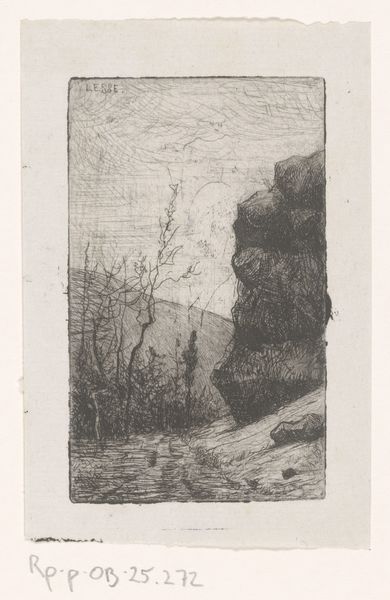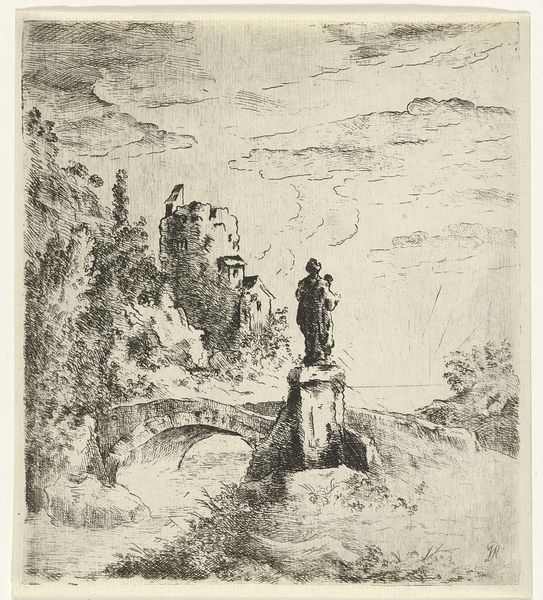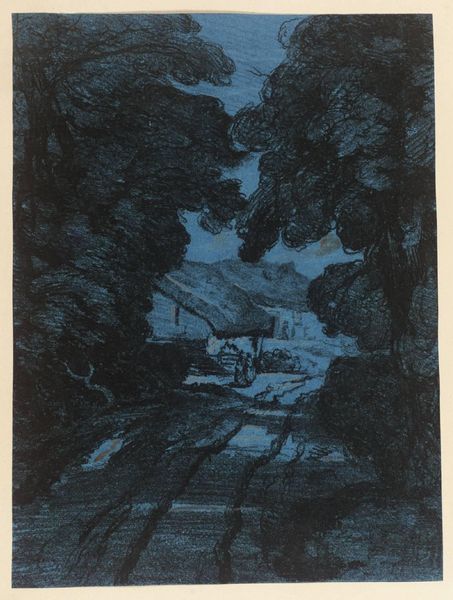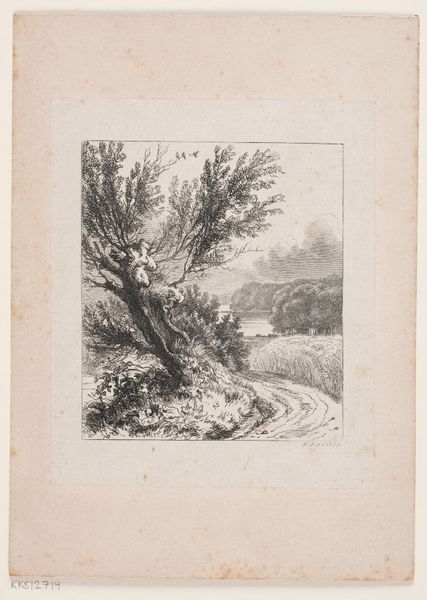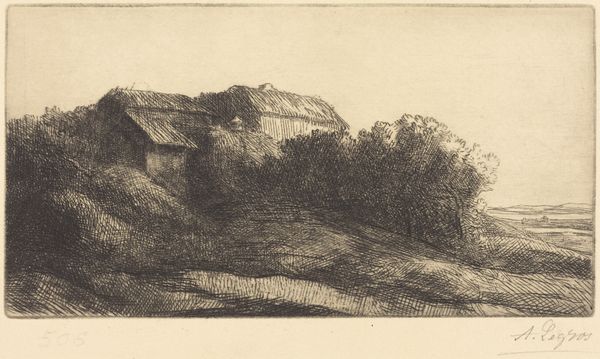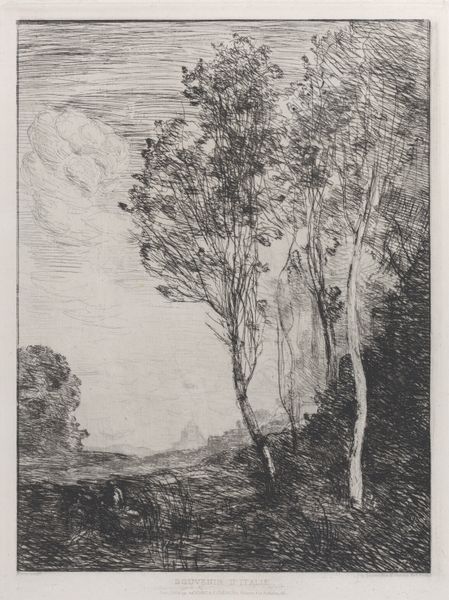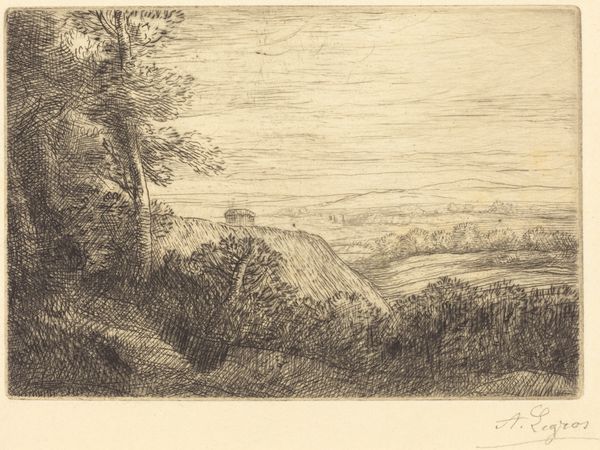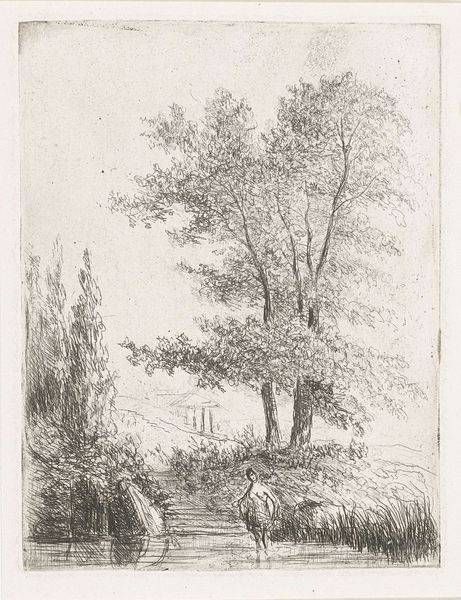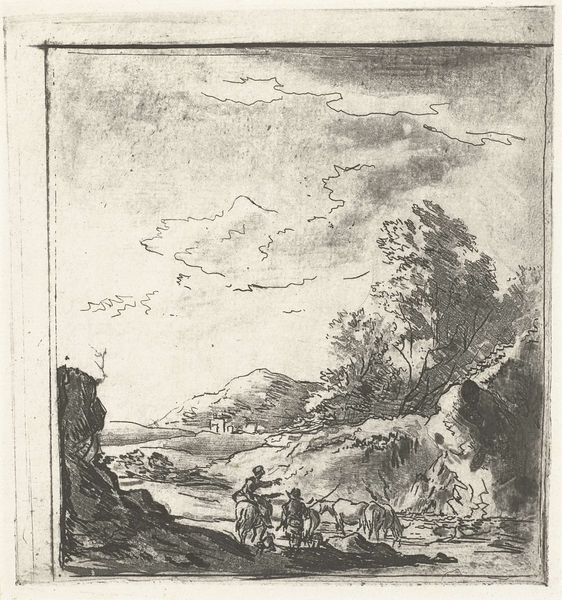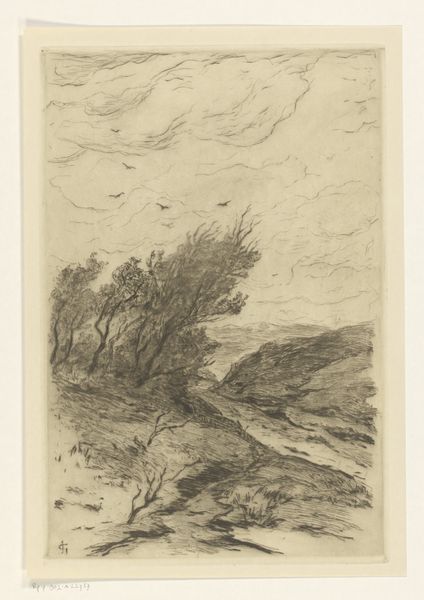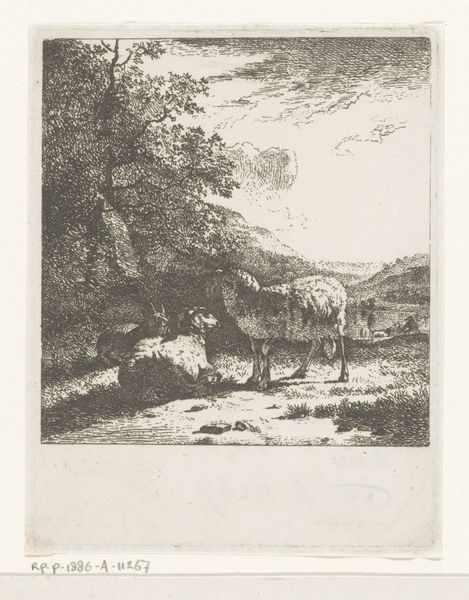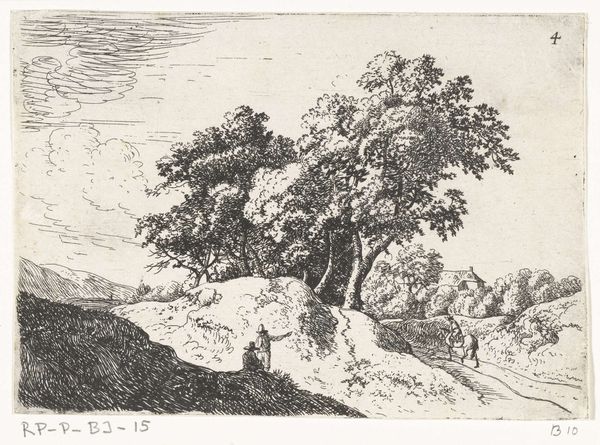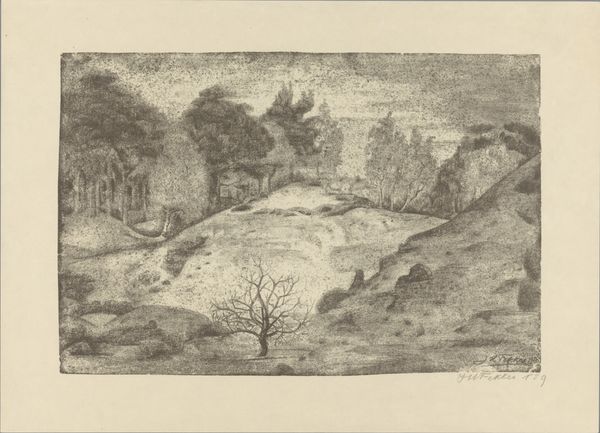
drawing, print, etching
#
drawing
# print
#
impressionism
#
etching
#
landscape
Copyright: Public Domain: Artvee
Curator: This is Camille Pissarro's etching, "La Roche-Guyon," created in 1866. It's an early example of his exploration with the printmaking process. Editor: Immediately, I'm struck by its brooding atmosphere. The sky presses down with a turbulent energy mirrored in the rugged terrain. Curator: The landscape certainly dominates. Considering Pissarro's involvement with Impressionism, it is intriguing to see the direct labor of applying acid resist and the expressive possibilities in the etched line to represent landscape, and its engagement with agricultural labor that Impressionism generally excludes. The etching process inherently invites the mark of the hand. Editor: Yes, and there’s an echo in the visual language: The turbulent sky finds its reflection in the textures of the rocks and foliage, and that winding road is nearly swallowing that small horse-drawn cart. It creates a kind of David and Goliath contrast, doesn’t it? Humankind humbled by the sublime power of nature. Curator: Right, Pissarro here almost acknowledges the rise of industry versus rural agricultural production in that fraught interplay. Etchings, given their relative ease of mechanical reproduction also made art accessible, in a very tactile form, which shouldn't be ignored. Editor: Perhaps that cart represents more than mere transit. It’s heading, seemingly, towards that rocky outcrop. Notice how the outcropping resembles, almost consciously, a fortress ruin or maybe even a cathedral spire, and in its placement within this rural landscape. A landmark that’s been there through generations, dwarfing modern innovation. A tangible link to a shared past… Curator: The layering and the cross hatching of the landscape demonstrate how printmaking created an engagement and understanding with place, materiality, and the realities of Impressionist production. Editor: Thinking about the visual symbolism certainly makes me ponder the role of that cart in Pissarro’s landscape—is it a challenge or integration of labor within landscape's symbolic hold over time. Curator: Interesting how you've highlighted these things in that small procession along the landscape. It encourages us to appreciate the changing nature of artwork within labor itself. Editor: And that constant push-pull between tradition and the new. I think my eye keeps coming back to those churning skies. Curator: Seeing the level of intricacy involved really offers us an appreciation of the labor that the artist had to endure during Impressionist explorations of landscape. Editor: It enriches our understanding to reflect and ponder the symbols layered within art to consider its historical value through art, in a way. Thank you!
Comments
No comments
Be the first to comment and join the conversation on the ultimate creative platform.
